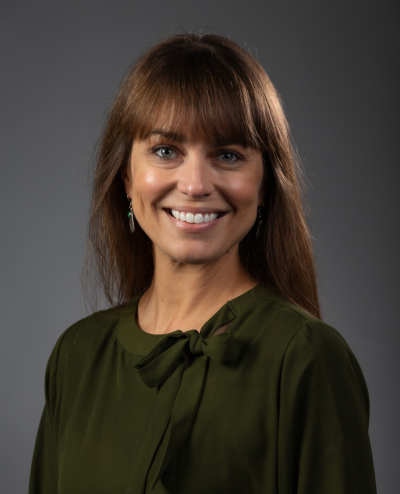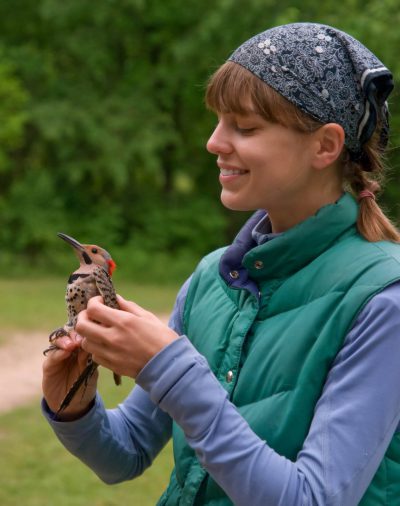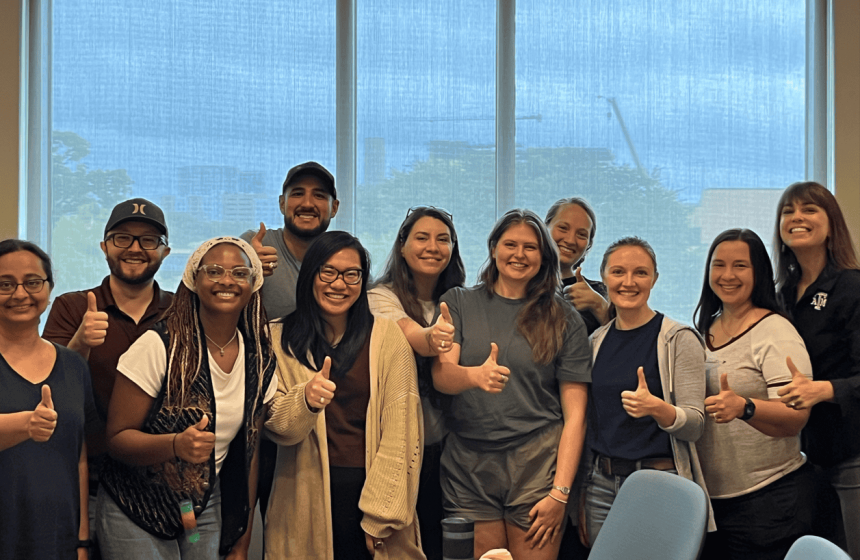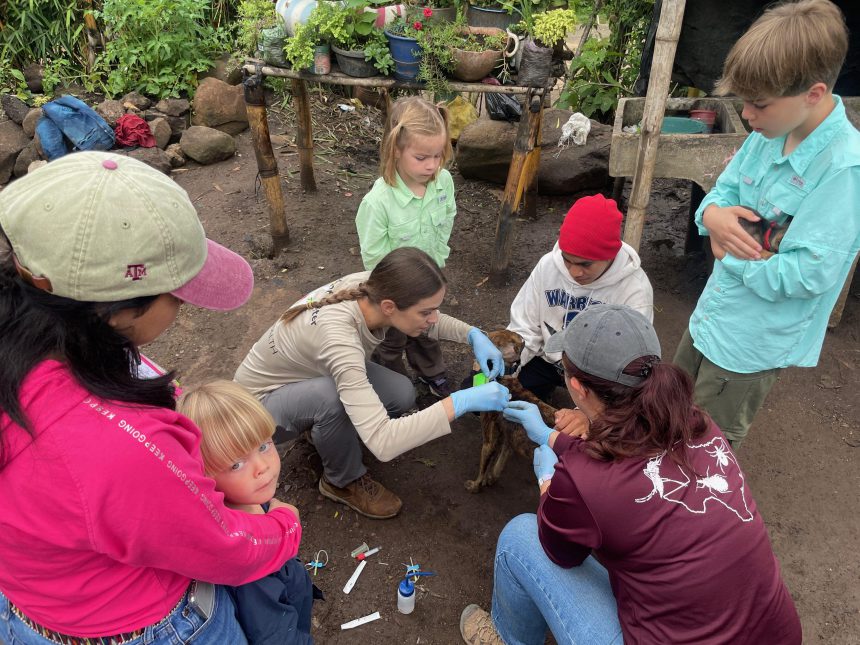This year’s Phi Zeta Research Day keynote speaker is Sarah A. Hamer, MS, PhD, DVM, DACVPM (epidemiology). Hamer is a veterinary ecologist working at the forefront of zoonotic disease research—diseases that spread between animals and people. Now a professor of epidemiology and an endowed chair at Texas A&M University, Hamer earned both her DVM and PhD from Michigan State University. Her work draws on a broad foundation in ecology, epidemiology, and conservation biology, with a research portfolio that spans ticks, mosquitoes, birds, mammals, and humans. Through multidisciplinary collaborations and field-based investigations, she’s helping to shape how we understand, track, and respond to emerging infectious diseases.

The experience that really sealed the deal for me was my master’s program at the University of Illinois. With a background in environmental science and ecology, my master’s work involved studying the urban ecology of American crows. I was radio tracking them around the landscape, learning how they thrive in urban environments. Then, two-thirds of the birds that I was studying died unexpectedly. I was able to quickly recover their bodies since I had trackers on them. It turns out it was West Nile virus, an exotic mosquito-borne virus that had only recently made its way to the United States. Not only were the birds dying, but people and horses were also getting sick from the same virus, sometimes with fatal outcomes. It was all over the news. There I was, with critical data on the movement of what turned out to be a major avian reservoir for the virus.
My master’s thesis took a big shift at that time and became a story about these reservoirs. I knew then that I wanted a research career studying these diseases that impact wildlife, domestic animals, and humans, so I sought out a PhD position in that field. That is what brought me to the Fisheries and Wildlife Department at MSU. Along the way, I decided to earn a veterinary degree to elevate the potential impact of my research, hoping to improve both animal health and human health.
The team in my lab at Texas A&M University works on disease ecology and epidemiology across different systems and scales. We’re trying to train students on the principles of study design, data analysis, and key skills they can apply to different emerging disease systems or emerging health threats.
A big focus of our work is on vector-borne diseases. One of the main study systems for our team is kissing bugs and Chagas disease. In the southern US and across Latin America, kissing bugs spread a parasite that causes deadly heart disease in people and other mammals. Texas is a hotspot for these vectors and the Chagas parasite, and there’s unfortunately a lot of dogs dying from the infection. But as a neglected disease, there aren’t great diagnostic tools, treatments, or funding for research. We’re trying to learn about the maintenance of the parasite in nature by wildlife reservoirs, as well as ways to protect dogs and humans.
Research with birds has also been a consistent theme in the lab, especially now that I’ve been serving as the director of our campus avian health research center. We’re also expanding into some newer areas, such as wildlife ecotoxicology and health outcomes caused by chemical threats in the environment. It’s been really cool to recruit new students over the years with different expertise and interests, and we’re then able to design new projects to broaden our impact within the One Health field.
I’m fortunate to have maintained a great team of researchers over the years, from undergrads helping in the lab, to grad students designing their field programs, to full-time scientific staff, plus a large network of collaborators. That’s really how we can maintain a thriving lab that tackles all kinds of emerging diseases and animal health issues. We have a lot of diverse expertise on board. I never thought I’d be catching and swabbing Texas horned lizards, analyzing sequences from avian malaria parasites, netting and drawing blood from Mexican free-tailed bats, and guiding experimental antiparasitic treatments of dogs in a given week! It’s all possible because of the amazing lab team I get to work with.
We are contributing by describing an ecological basis for emerging diseases and threats. For example, with our Chagas Disease Research Program, we’re often sampling wild animals and dogs. This is done not only to learn about threats to their health, but to uncover whether or not they’re serving as sentinels, which would alert us to areas where people are also at risk. Additionally, we understand that you can sample all the animals or all the people you want, but you can’t ignore the environment, so we’re also characterizing features of homes to find associations with kissing bug populations. The way that the built environment could be contributing to a disease threat is a strong component of One Health.
My eight years at MSU completely shaped my career. When I came to Michigan State, I was there for this new PhD specialization in disease ecology and conservation medicine. It wasn’t yet on my radar that I would go to veterinary school! But the great quality of training that I received as an early PhD student and the experience of seeing One Health in action by my mentors demonstrated how a veterinary medical background could be beneficial for my research career. I’m grateful for the way I was able to then start vet school and finish up both programs together to be qualified to have the career that I have now. I’m so thankful for those years I spent at Michigan State University.
I learned so much in the woods of the Michigan state parks, along the lakeshore, and living and working out of the Kellogg Biological Station. I led teams to trap pretty much any vertebrate in the woods that might have a tick, from raccoons and flying squirrels to birds and lizards. I had such great experiences with the diversity of the wildlife community and learning how to chemically immobilize and collect blood samples from them. I realized how one sample from the field can turn into days of work and hundreds of dollars in the lab. I learned how impactful it was for me to be immersed in the full process of research, from writing proposals to scientific publication and public outreach. Now, I try to make sure my own graduate students also are immersed in this full process.
At MSU, I also grew as a leader and realized that feeling out of my lane can often be the best way to grow. I learned how to build a team, and that I didn’t need to be an expert in everything (or anything), but I could help bring experts together to do good science.
In a big research university like Michigan State, there is no shortage of opportunities to plunge into and gain experience with those doing research. Many professors not only teach classes and/or have clinical appointments, but also have active research programs. There is also no shortage of research seminars on a big campus, and those invited speakers are often eager to chat with trainees. Whether it’s a formal research program or not, chatting with professors allows students to get to learn about what happens in a research lab. There are also creative ways to make the most of the externship time in the program, including joining an off-campus research team. Use these opportunities to find something that you’re passionate about!
It’s interesting to compare the way I handled teaching epidemiology pre-pandemic to the way I do now. Pre-pandemic, things like herd immunity were like a foreign language to students, and now, my students come in with a good understanding of some of these principles. The public’s eyes were opened to the devastation that can be caused to our modern society by a virus, as well as the important role of public health officials during a pandemic. COVID-19 serves as an example of the dramatic consequences of infectious disease that everyone can relate to because everyone lived through it.
On one hand, there may be increased interest in these topics—infectious disease, pandemic preparedness—because they’re topics we can’t escape from. But on the other hand, recent global events have highlighted how science on infectious diseases has become polarized and politicized; yet another example of how additional skills and scientific partners are needed to stay relevant and impactful.
I’d head back to Guatemala and work on vector-borne diseases in the rural communities. My family and I spent time there a few years ago, and we’re hoping to go back. It was really cool to be able to draw parallels between the ecology of the Chagas disease there versus where I’m studying now in Texas and Mexico, and there is great need for new approaches to protect human and animal health.
I feel so fortunate that I’ve got such an amazing group of scientists and collaborators on my team, as well as fantastic students that have come to Texas A&M to work on these diseases with me. I’m really motivated by them, by seeing how excited they are when they make a discovery, have some success, or overcome a challenge. Helping my students to get to the point where I’m placing the hood on them at graduation—that’s the most satisfying.




